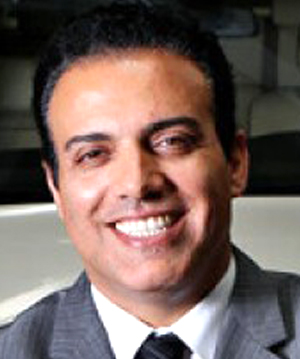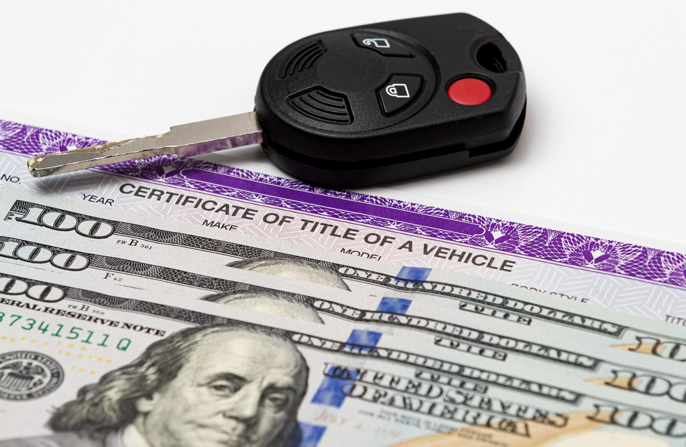You asked for it and we listened. In this column, we ask operators of all sizes and from all walks of the industry a question about their business and report their answers so you can assess how your own company compares to your peers. If you would like to participate, please email Rob Smentek at
TOPIC: What criteria do you use to determine whether it’s time to add or replace a vehicle?
 When adding vehicles to our fleet, we first look at real demand and utilization. Since COVID, it’s no longer just mileage or age. When a vehicle class runs near 80% on weekdays for a period of time, and we start risking turning away work or getting repeat requests for certain features, that tells us there is a gap.
When adding vehicles to our fleet, we first look at real demand and utilization. Since COVID, it’s no longer just mileage or age. When a vehicle class runs near 80% on weekdays for a period of time, and we start risking turning away work or getting repeat requests for certain features, that tells us there is a gap.
The decision also must work for our independent operators (IOs), since the addition should help them say yes more often, keep their calendars full, and meet our service standards. Reliability and total cost of ownership matter, so if downtime and repairs start to affect the client experience, we replace before we expand.
New technology and safety features carry real weight, since these upgrades improve service and reduce risk. Market fit stays in view, with private aviation patterns, airport rules, and new corporate programs guiding the exact vehicle type that we add. While we test demand, we will often offer clients an upgrade to the next class to make sure the numbers truly support an addition, and we may bring on another IO to cover a surge before we commit to a purchase.
Kirk Bagger, Corporate Travel Manager & CEO
Captains Car Service in Cleveland, Ohio
 We keep sedans and SUVs anywhere from two to five years and dispose of them based on mileage or if the cost-to-repair exceeds the total value. If we only keep something for two years, it may be because we weren’t happy with the product. For example, we currently have one vehicle in the ’21 model year, all the rest are ’22-’25.
We keep sedans and SUVs anywhere from two to five years and dispose of them based on mileage or if the cost-to-repair exceeds the total value. If we only keep something for two years, it may be because we weren’t happy with the product. For example, we currently have one vehicle in the ’21 model year, all the rest are ’22-’25.
Vans and buses have a much longer lifecycle for us mostly because of the replacement cost after the pandemic.
Nick Boccio, General Manager
Buffalo Limousine in Buffalo, N.Y.
 There are many combinations of factors that go in adding a new vehicle to our fleet. Obviously, increased demand plays into the decision tremendously. An owner or operations person needs to ask themselves, “Can I get by if I sub out the vehicle or optimize the current fleet even more?” If so, then delaying the decision may be monetarily beneficial for the moment. If you have prolonged demand for a current type of vehicle—say, a new account or just increased business—then it is worth the purchase. Our numerous high-end clients and affiliates demand late-model cars and SUVs to make their passengers happy. In this case, you may have no other option but to buy new.
There are many combinations of factors that go in adding a new vehicle to our fleet. Obviously, increased demand plays into the decision tremendously. An owner or operations person needs to ask themselves, “Can I get by if I sub out the vehicle or optimize the current fleet even more?” If so, then delaying the decision may be monetarily beneficial for the moment. If you have prolonged demand for a current type of vehicle—say, a new account or just increased business—then it is worth the purchase. Our numerous high-end clients and affiliates demand late-model cars and SUVs to make their passengers happy. In this case, you may have no other option but to buy new.
Mileage also plays a great deal into the scenario. You may have a late-model bus, but, if it has an excessive amount of mileage, you might start to question its reliability. In this case, you may opt to buy a new bus.
Lastly, trends in customer requests for certain types of vehicles are also a big deciding factor. Before a company dives headfirst into a new type of vehicle, make sure you look at all options. Perhaps it’s best to sub it to another company a few times to see if this is something you want to obligate to. Is this new type of vehcile a sure thing or another short-lived fad like the stretch SUV or the armored car limo?
David Brown, President
Premiere Transportation in Albany, N.Y.
 With clients expecting nothing short of the best, maintaining a first-class fleet is essential to our reputation and service standards.
With clients expecting nothing short of the best, maintaining a first-class fleet is essential to our reputation and service standards.
At our company, with more than 420 cars, we follow a very clear policy: no vehicle remains in service beyond 120,000 miles. This ensures reliability and minimizes the risk of mechanical issues. We also retire vehicles at a maximum of three years of service, assuming they have met the mileage criteria. This keeps our fleet modern, comfortable, and aligned with client expectations. Further, even if a vehicle is mechanically sound, we evaluate it from the client’s perspective. Outdated features or signs of wear can affect the overall experience, so we refresh our fleet proactively. Because certain vehicles see more use in high-demand routes, we replace these even sooner to ensure consistency and reliability.
Alex Darbahani, Founder/CEObv
KLS Worldwide in Los Angeles, Calif.
 There is a huge difference in adding a vehicle vs. replacing a retiring vehicle. If we find ourselves frequently turning away clients due to lacking a particular type, that’s the time for a review of the demand. If we are farming out requests for a certain vehicle on a regular basis, then we consider adding to our fleet, taking into consideration whether the demand is seasonal or year-round work.
There is a huge difference in adding a vehicle vs. replacing a retiring vehicle. If we find ourselves frequently turning away clients due to lacking a particular type, that’s the time for a review of the demand. If we are farming out requests for a certain vehicle on a regular basis, then we consider adding to our fleet, taking into consideration whether the demand is seasonal or year-round work.
As far as replacing vehicles, we use a combination of factors that include total operational cost, reliability, downtime, and brand presentation. If the last 12-month maintenance exceeds a target mileage expense; has repeated unscheduled repairs; or exhibits interior wear, squeaks/rattles, ride quality, or outdated infotainment relative to luxury expectations, it’s time to replace the vehicle.
Optional expectations:
• Executive sedans: Three to five years or 60K to 100K miles
• Full-size SUVs: Four to six years or 80K to 150K miles
• Sprinters/shuttles: Five to eight years or 150K to 250K miles
Harry Dhillon, President
Ecko Worldwide in Santa Clara, Calif.
 Our decision to add a new vehicle is based on a blend of fleet performance, client demand, and brand positioning. Mileage and age are factors, but they’re not the only drivers. We look closely at customer requests and market trends—for example, if more clients are asking for luxury Sprinters over stretch limos, that’s a signal to adapt. We also consider maintenance costs versus ROI; once a vehicle starts requiring frequent service or loses the pristine look our clients expect, it’s time to replace or upgrade. Ultimately, the goal is to ensure our fleet reflects reliability, safety, and the level of luxury our brand promises.
Our decision to add a new vehicle is based on a blend of fleet performance, client demand, and brand positioning. Mileage and age are factors, but they’re not the only drivers. We look closely at customer requests and market trends—for example, if more clients are asking for luxury Sprinters over stretch limos, that’s a signal to adapt. We also consider maintenance costs versus ROI; once a vehicle starts requiring frequent service or loses the pristine look our clients expect, it’s time to replace or upgrade. Ultimately, the goal is to ensure our fleet reflects reliability, safety, and the level of luxury our brand promises.
Lenin Fraga, CEO
American Transportation in Miami, Fla.
 This is a two-part answer for us. We replace vehicles based on mileage or year model. Currently, we are doing the following: Sedans and SUVs get replaced at 150K miles, Sprinters and minibuses at the five-year mark, and we are attempting to replace motorcoaches between five to seven years based on miles.
This is a two-part answer for us. We replace vehicles based on mileage or year model. Currently, we are doing the following: Sedans and SUVs get replaced at 150K miles, Sprinters and minibuses at the five-year mark, and we are attempting to replace motorcoaches between five to seven years based on miles.
If we are looking to add to the fleet, we only add vehicles based on revenue numbers. If we consistently hit those numbers, we know it is time to add a unit, but if we don’t hit those numbers, we just farm out any overflow work we have. We expect our units to produce at least the following revenue on average per month:
• Sedans: $12K per month • Small minis: $20K per month
• SUVs: $18K per month • Midsize minis: $25k per month
• Sprinters: $18K per month • Motorcoaches: $30k per month
Matt Johnston, President
AJL International in Irvine, Texas
 Our general criteria for fleet upgrading are as follows:
Our general criteria for fleet upgrading are as follows:
• Sedans and SUVs: Three years or newer
• Sprinter vans: Four years or newer
• Buses: Five years or newer
Additionally, recent tax legislation has introduced very generous implications that significantly influence our upgrading decisions. For tax years beginning after December 31, 2024, the OBBB Act made the following changes to Section 179:
• Increased deduction limit: The maximum Section 179 deduction doubled from $1.25M to $2.5M.
• Raised phase-out threshold: The phase-out threshold for total equipment purchases increased from $3.13M to $4M. The deduction is reduced dollar-for-dollar for purchases above this amount.
• Restored 100% bonus depreciation: The bill permanently reinstated 100% bonus depreciation, which can be applied after the Section 179 limit is reached.
Mark Kini, Founder & CEO
Boston Chauffeur in Peabody, Mass.
 Our criteria for expanding the fleet have always been closely tied to demand and the signing of new contracts. For example, when we started serving the Albert Einstein Hospital, we dedicated armored vehicles and executive vans on a daily basis. Whenever we noticed that outsourcing was becoming too frequent, it was a clear sign that it was time to invest in expanding our fleet. This approach has guided us from the very beginning and continues to this day. As a result, we are currently the company with the largest fleet of armored vehicles in Brazil.
Our criteria for expanding the fleet have always been closely tied to demand and the signing of new contracts. For example, when we started serving the Albert Einstein Hospital, we dedicated armored vehicles and executive vans on a daily basis. Whenever we noticed that outsourcing was becoming too frequent, it was a clear sign that it was time to invest in expanding our fleet. This approach has guided us from the very beginning and continues to this day. As a result, we are currently the company with the largest fleet of armored vehicles in Brazil.
Robson Maciel, Director CS Global in Sao Paulo, Brazil
 When determining when to replace a vehicle, we generally like to do it around 100K miles while there is still a good amount of warranty left on it. This is usually around 18 months, which makes for a better resale value. When deciding to add, there could be a number of factors, including increased volume and/or client requests.
When determining when to replace a vehicle, we generally like to do it around 100K miles while there is still a good amount of warranty left on it. This is usually around 18 months, which makes for a better resale value. When deciding to add, there could be a number of factors, including increased volume and/or client requests.
Shariff McMichael, President & CEO
Dav El/BostonCoach in Everett, Mass.
 Customer demand is a big factor when adding a vehicle: if clients keep requesting a type of vehicle we don’t currently have, that’s a clear signal to expand. We also look at how busy our existing fleet is. When demand consistently exceeds capacity, it’s obvious we need more vehicles. Age and mileage are important too. In this business, the look of the vehicle is just as important, and we all know that. Our clients want the latest models. For example, we could buy a 2025, but if the 2026 comes out with a body change, the 2025 suddenly looks obsolete. Even though it’s only a year old, people see it as outdated, and that can make them question the quality of the trip.
Customer demand is a big factor when adding a vehicle: if clients keep requesting a type of vehicle we don’t currently have, that’s a clear signal to expand. We also look at how busy our existing fleet is. When demand consistently exceeds capacity, it’s obvious we need more vehicles. Age and mileage are important too. In this business, the look of the vehicle is just as important, and we all know that. Our clients want the latest models. For example, we could buy a 2025, but if the 2026 comes out with a body change, the 2025 suddenly looks obsolete. Even though it’s only a year old, people see it as outdated, and that can make them question the quality of the trip.
On a bigger picture level, we also consider predictive trends and booking patterns. Seasonal peaks or events can create spikes in demand, and if we see that happening in certain cities or for specific vehicle types, we can proactively add vehicles. Technological upgrades are another factor to consider as newer models often have advanced safety or comfort features that clients expect, and adding those vehicles can improve service quality and differentiate us from competitors. Client perception and brand image play a role, and fleet expansion isn’t always about capacity. Introducing new vehicles helps us maintain our luxury image and high safety standards, while also demonstrating that we stay current with market expectations.
At the end of the day, adding a vehicle is about balancing reliability, client expectations, operational needs, and brand perception so we can consistently deliver the best experience to our clients and partners.
Ariadna Noches, Vice President of Operations
Mundi Worldwide in Deerfield Beach, Fla.
 We keep our fleet no more than three years, purchasing mainly in the second model year to balance value, dependability, and resale timing at key mileage points. By rotating vehicles every two years and watching industry trends nationwide, we ensure a fleet that always reflects modern body styles and client expectations.
We keep our fleet no more than three years, purchasing mainly in the second model year to balance value, dependability, and resale timing at key mileage points. By rotating vehicles every two years and watching industry trends nationwide, we ensure a fleet that always reflects modern body styles and client expectations.
Gus Ortis, CEO
Executive Transportation in Eden Prairie, Minn.
 We don’t add vehicles just to grow the fleet—we do it to meet real demand. I look closely at client needs, peak demand periods, and how well our current vehicles are being utilized. If our existing fleet is stretched and consistently performing at capacity, that’s when we know it’s time to consider an addition.
We don’t add vehicles just to grow the fleet—we do it to meet real demand. I look closely at client needs, peak demand periods, and how well our current vehicles are being utilized. If our existing fleet is stretched and consistently performing at capacity, that’s when we know it’s time to consider an addition.
We’re also mindful of the financial impact. Every new vehicle comes with insurance and operational costs, so we make sure it’s justified. For specialty vehicles, we take an even more deliberate approach. If there’s not already strong demand, we will build a marketing plan around the vehicle to ensure it contributes meaningfully to revenue. It’s all about smart growth and maintaining the high standards our clients expect.
Mike Rose, President
My Limousine Service in Mt. Olive, N.J.
 Wichita, Kansas, is a bit of an anomaly when it comes to knowing when to add a vehicle, as well as the vehicle type. I love having this conversation with my industry colleagues because the general industry criteria for adding or changing vehicles just does not fit us like a glove. I started building our fleet on guts alone at first. Then as calls increased, I was able to make better vehicle choices. In Wichita, we have no local affiliates to back us up, so if we do not have the vehicle, we are unable to do the job. So, our criteria are a bit different than the average bear. And since it takes us considerably longer to put miles on our fleet, we tend to hold onto some of our vehicles for longer than industry average. That being said, we still change vehicles when they reach a higher mileage, or become more trouble than they are worth. We also change if the upgraded styles are considerably different to maintain an industry leading look for clients and affiliates.
Wichita, Kansas, is a bit of an anomaly when it comes to knowing when to add a vehicle, as well as the vehicle type. I love having this conversation with my industry colleagues because the general industry criteria for adding or changing vehicles just does not fit us like a glove. I started building our fleet on guts alone at first. Then as calls increased, I was able to make better vehicle choices. In Wichita, we have no local affiliates to back us up, so if we do not have the vehicle, we are unable to do the job. So, our criteria are a bit different than the average bear. And since it takes us considerably longer to put miles on our fleet, we tend to hold onto some of our vehicles for longer than industry average. That being said, we still change vehicles when they reach a higher mileage, or become more trouble than they are worth. We also change if the upgraded styles are considerably different to maintain an industry leading look for clients and affiliates.
Quentin Shackelford, Owner
AllClassLimo.com in Wichita, Kan.
 We determine when to add a new vehicle by demand. If we farm out local work, and it becomes a regular daily issue, then we get another new vehicle. The time of year is also a factor as peaks and valleys are getting more intense. Price of the vehicle is also a factor. We always stay on top by having a few new Escalades, Navigators, and Sprinters.
We determine when to add a new vehicle by demand. If we farm out local work, and it becomes a regular daily issue, then we get another new vehicle. The time of year is also a factor as peaks and valleys are getting more intense. Price of the vehicle is also a factor. We always stay on top by having a few new Escalades, Navigators, and Sprinters.
Cliff Wright, President
Royal Transportation in Orlando, Fla.
 Maintaining a modern, reliable fleet is central to our commitment to premium service. In our key cities—Hong Kong, Tokyo, and Beijing—we follow a proactive fleet renewal strategy. Specifically, we aim for at least 10% of our vehicles on dispatch list to be under three years old, and 80% within five years. We monitor fleet composition closely, and when we approach these thresholds, we initiate the process of adding new vehicles. This ensures our clients enjoy the latest in comfort, safety, and technology. While mileage and customer feedback are considered, our age-based benchmarks are the primary driver of renewal decisions. This disciplined approach allows us to consistently deliver the high standards our clients expect.
Maintaining a modern, reliable fleet is central to our commitment to premium service. In our key cities—Hong Kong, Tokyo, and Beijing—we follow a proactive fleet renewal strategy. Specifically, we aim for at least 10% of our vehicles on dispatch list to be under three years old, and 80% within five years. We monitor fleet composition closely, and when we approach these thresholds, we initiate the process of adding new vehicles. This ensures our clients enjoy the latest in comfort, safety, and technology. While mileage and customer feedback are considered, our age-based benchmarks are the primary driver of renewal decisions. This disciplined approach allows us to consistently deliver the high standards our clients expect.
Amy Yan, Co-Founder & Managing Partner
AmyExpress in Hong Kong, China
We’ve loved hearing your answers to our benchmarking questions—but we always welcome suggestions for future topics, too!
Send an email to
[10.25]




